NGHIÊN CỨU ĐẶC ĐIỂM LÂM SÀNG VÀ HÌNH ẢNH HỌC Ở BỆNH NHÂN CHẢY MÁU DƯỚI NHỆN DO VỠ PHÌNH ĐỘNG MẠCH NÃO
Nội dung chính của bài viết
Tóm tắt
Mục tiêu: Mô tả đặc điểm lâm sàng và hình ảnh học của bệnh nhân chảy máu dưới nhện do vỡ phình động mạch não. Thiết kế nghiên cứu: nghiên cứu hồi cứu. Phương pháp nghiên cứu: Nghiên cứu trên 200 bệnh án của bệnh nhân chảy máu dưới nhện do vỡ phình động mạch não điều trị tại trung tâm Đột quỵ và khoa Phẫu thuật thần kinh từ tháng 8 năm 2023 đến hết tháng 8 năm 2024. Kết quả: tuổi trung bình của bệnh nhân là 59, nữ giới chiếm đa số 54,5%, bệnh hay gặp người có tiền sử tăng huyết áp (46,5%). Triệu chứng khởi phát thường gặp là đau đầu, chiếm 88,5%. Tại thời điểm nhập viện, dấu hiệu thần kinh khu trú hay gặp nhất là gáy cứng, chiếm 50,5%, vị trí túi phình thường gặp nhất nằm ở tuần hoàn não trước, chiếm 81,5%. Về mức độ nặng của bệnh, đa số bệnh nhân nhập viện với WFNS độ I chiếm 59% và 69,6% bệnh nhân có kết quả tốt. Khi phân loại mức độ nặng của bệnh theo thang điểm Hunt & Hess, mức độ II chiếm đa số với 54,5% và 69,3% bệnh nhân có kết quả tốt. Kết luận và khuyến nghị: việc phối hợp chặt chẽ giữa lâm sàng và hình ảnh học là cần thiết để phát hiện kịp thời các biến chứng sau chảy máu dưới nhện do vỡ phình động mạch não.
Chi tiết bài viết
Từ khóa
Chảy máu dưới nhện, vỡ phình động mạch não
Tài liệu tham khảo
2. Rosenørn, J., Eskesen, V., Schmidt, K., & Rønde, F. (1987). The risk of rebleeding from ruptured intracranial aneurysms. Journal of neurosurgery, 67(3), 329–332. https://doi.org/10. 3171/jns.1987.67.3.0329
3. Cha, K. C., Kim, J. H., Kang, H. I., Moon, B. G., Lee, S. J., & Kim, J. S. (2010). Aneurysmal rebleeding: factors associated with clinical outcome in the rebleeding patients. Journal of Korean Neurosurgical Society, 47(2), 119–123. https://doi.org/10.3340/jkns.2010.47.2.119
4. Kassell, N. F., Torner, J. C., Haley, E. C., Jr, Jane, J. A., Adams, H. P., & Kongable, G. L. (1990). The International Cooperative Study on the Timing of Aneurysm Surgery. Part 1: Overall management results. Journal of neurosurgery, 73(1), 18–36. https://doi.org/ 10.3171/jns. 1990.73.1.0018
5. Rivero Rodríguez, D., Scherle Matamoros, C., Cúe, L. F., Miranda Hernández, J. L., Pernas Sánchez, Y., & Pérez Nellar, J. (2015). Predictor's of Mortality in Patients with Aneurysmal Subarachnoid Haemorrhage and Reebleding. Neurology research international, 2015, 545407. https://doi.org/10. 1155/2015/ 545407
6. Vương Thị Thu Hiền, Lương Quốc Chính. (2022). Giá trị tiên lượng của thang điểm wfns đối với kết quả xấu sau chảy máu dưới nhện do phình động mạch não. Tạp Chí Nghiên cứu Y học, 149(1), 135-142. https://doi.org/10.52852/ tcncyh. v149i1.516
7. Rosengart, A. J., Schultheiss, K. E., Tolentino, J., & Macdonald, R. L. (2007). Prognostic factors for outcome in patients with aneurysmal subarachnoid hemorrhage. Stroke, 38(8), 2315–2321. https://doi.org/ 10.1161/STROKEAHA.107.484360
8. Brawanski, N., Dubinski, D., Bruder, M., Berkefeld, J., Hattingen, E., Senft, C.,... & Konczalla, J. (2021). Poor grade subarachnoid hemorrhage: treatment decisions and timing influence outcome. Should we, and when should we treat these patients?. Brain hemorrhages, 2(1), 29-33.
9. Zhou, Z., Wang, F., Chen, T., Wei, Z., Chen, C., Xiang, L., Xiang, L., Zhang, Q., Huang, K., Jiang, F., Zhao, Z., & Zou, J. (2023). Pre- and Post-Operative Online Prediction of Outcome in Patients Undergoing Endovascular Coiling after Aneurysmal Subarachnoid Hemorrhage: Visual and Dynamic Nomograms. Brain sciences, 13(8), 1185. https://doi.org/10.3390/brainsci13081185


